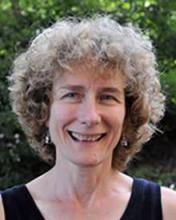We are testing a new system for linking grants to scientists.
The funding information displayed below comes from the
NIH Research Portfolio Online Reporting Tools and the
NSF Award Database.
The grant data on this page is limited to grants awarded in the United States and is thus partial. It can nonetheless be used to understand how funding patterns influence mentorship networks and vice-versa, which has deep implications on how research is done.
You can help! If you notice any innacuracies, please
sign in and mark grants as correct or incorrect matches.
Sign in to see low-probability grants and correct any errors in linkage between grants and researchers.
High-probability grants
According to our matching algorithm, Dorothy A. Schafer is the likely recipient of the following grants.
| Years |
Recipients |
Code |
Title / Keywords |
Matching
score |
| 1985 — 1986 |
Schafer, Dorothy A |
F32Activity Code Description:
To provide postdoctoral research training to individuals to broaden their scientific background and extend their potential for research in specified health-related areas. |
Developmental Changes in the Myogenic Cell Surface |
0.954 |
| 2003 — 2008 |
Schafer, Dorothy A |
R01Activity Code Description:
To support a discrete, specified, circumscribed project to be performed by the named investigator(s) in an area representing his or her specific interest and competencies. |
Mechanisms of Actin Assembly At Membranes @ University of Virginia Charlottesville
DESCRIPTION (provided by applicant): The long-term objectives of this research are to understand the functional and mechanistic relationships between actin dynamics and membrane traffic. Convincing evidence supports such a relationship, however, in spite of this evidence, the nature of this relationship remains obscure. We propose a combination of cellular and biochemical experiments to test hypotheses about the molecular mechanisms and biological functions provided by actin filaments during membrane traffic. The GTPase, dynamin, a primary regulator of endocytosis in mammalian cells, has emerged as a one molecule that might coordinately regulate actin and membrane dynamics. Dynamic actin is maintained by factors that promote filament assembly, by factors that define the length and organization of filaments, by factors that disassemble filaments and by factors that replenish the ATP-monomer pool. Dynamin could influence actin through one or more of these routes. One specific goal of this research is to elucidate the mechanisms by which dynamin regulates actin dynamics in vivo. We will achieve this goal by determining how mutants of dynamin having well-defined biochemical properties affect actin dynamics in vivo. Clues obtained from these observations in living cells will guide biochemical experiments using purified proteins and cell-free extracts to test hypotheses for the mechanisms. A second goal is to define the temporal and spatial relationship of dynamic actin and the dynamics of recycling membrane traffic and to determine how recycling pathways depend on actin. These pursuits will advance our understanding of membrane homeostasis during the dynamic cellular processes of cell migration and endocytosis.
|
1 |
